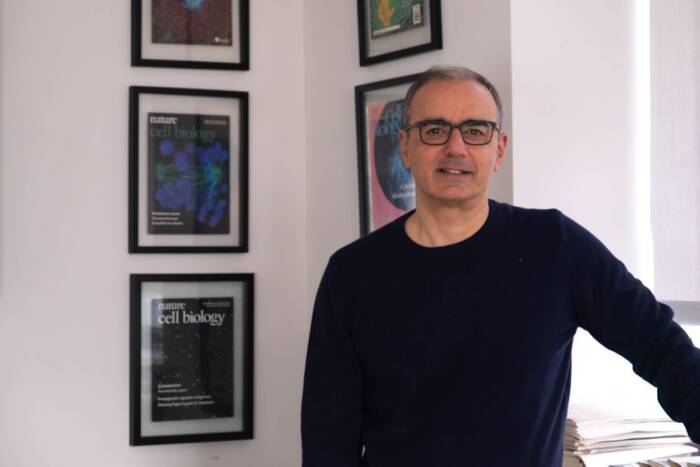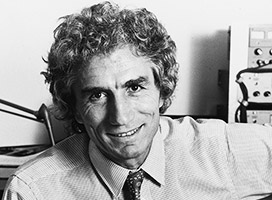Neurobiologist interested in memory to join Rockefeller faculty
For humans, the ability to form and recall memories is what gives meaning to existence. Memory is what allows us to learn, to form relationships, and to feel emotions. Priya Rajasethupathy, the most recent addition to Rockefeller’s faculty, studies the mechanisms that make memories possible, working to understand how molecules and neural circuits interact to store and retrieve information.

Neuroscientist Priya Rajasethupathy will be joining Rockefeller in May next year.
Currently a postdoc at Stanford, Rajasethupathy will join the university as a tenure-track assistant professor and head of laboratory in May.
“Neuroscience seeks to understand how computations in the brain give rise to meaningful behavior, and to me, memory lies at the heart of this endeavor,” Rajasethupathy says. “My goal is to follow the neural circuits responsible for this process, as information is processed, stored, updated, and retrieved across the brain.”
A genetic perspective
Rajasethupathy began examining memory at the level of genes and molecules. In 2013, she completed an M.D.-Ph.D. from Columbia University, where she trained with Eric Kandel, who pioneered the use of sea slugs as model organisms to understand memory. When tapped on their siphon, sea slugs will reflexively withdraw their gills—a behavior that can be modified through learning—and scientists have uncovered the underlying molecules and circuits that mediate this behavior.
Working with Kandel and colleagues at Columbia, together with Thomas Tuschl’s group at Rockefeller and Chris Sander’s group at Memorial Sloan Kettering, Rajasethupathy discovered that learning leads to modifications in DNA that enable the maintenance of synaptic connections and long-lasting memories. These DNA modifications, it turns out, were mediated by a new class of regulatory RNA molecules, piRNAs, that had never before been described in the brain.
From genes to circuits; from slugs to mice
While this research examined interactions among three neurons, memories within the human brain can involve hundreds to thousands of cells. In order to better understand these computations, Rajasethupathy moved from slugs to mice when she began her postdoc in Karl Deisseroth’s lab at Stanford.
A brain region called the hippocampus has long been known to be crucial to the formation of new memories. Rajasethupathy’s research, however, discovered a new circuit that is necessary for the retrieval of memories. This circuit connects the brain’s prefrontal cortex, an area responsible for complex thought and emotions, to the hippocampus. By activating this circuit, Rajasethupathy found, it was possible to artificially evoke memories in mice. But how does this circuit perform memory retrieval?
Using an approach in which neurons can be engineered to glow when they become active, Rajasethupathy set up experiments that allowed her to watch the activity of hundreds of neurons within the hippocampus of a living mouse as it performed memory-guided tasks in a virtual-reality environment. Through this approach, she found that during learning a few neurons emerged as hubs, with high connectivity to other neurons. These hub neurons were preferentially accessed by the prefrontal-to-hippocampus circuit, and served as a conduit for the recruitment of other neurons involved in memory representation.
At Rockefeller, Rajasethupathy plans to continue investigating this circuit. She is interested in determining what information the prefrontal cortex is routing to the hub neurons within the hippocampus during memory retrieval. She also wants to know what differentiates hub neurons from other cells, and how they are selected and maintained.
Disease and behavior
Rajasethupathy has also begun connecting these mechanisms to neuropsychiatric disease, developing mouse models to explore the genetic basis for memory disorders.
“Memories span a spectrum,” Rajasethupathy says. “If they are too weak, they are associated with Alzheimer’s and other forms of dementia; meanwhile, post-traumatic stress disorder and addiction are associated with memories that are too strong. By bridging the link between genes to circuits, we may be able to find better treatment options for conditions at both ends of this spectrum. We are in an era where transformative technologies in genomics and systems neuroscience can be leveraged to achieve this goal.”
“Given her contributions so far, it is clear that Priya is poised to make significant advances to our understanding of brain function and debilitating memory-related disorders as her work progresses,” says Marc Tessier-Lavigne, the university’s president. “She brings energy and insight to her work, and I have no doubt that her career will flourish at Rockefeller.”


